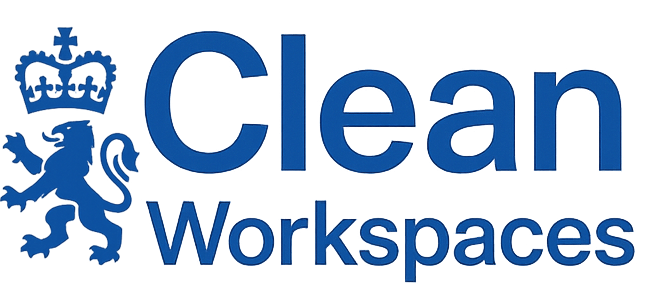The Hygiene Challenge in Shared Workspaces
Shared workspaces present unique hygiene challenges. Whether you're in a traditional office with shared meeting rooms and facilities or a coworking space where multiple businesses share the same environment, maintaining proper hygiene is essential for health, productivity, and professional image.
The COVID-19 pandemic significantly heightened awareness about workspace hygiene, but even as specific concerns about the virus recede, the fundamental importance of maintaining clean shared environments remains. In fact, according to research from the Health and Safety Executive, workplace infections account for millions of lost workdays annually in the UK alone.
This article presents five essential hygiene practices that can dramatically improve health outcomes in any shared workspace environment.
1. Implement Regular Hand Hygiene Practices
Without question, hand hygiene remains the single most effective practice for preventing the spread of infections in shared environments. Our hands are primary vectors for transmitting germs between surfaces and our respiratory system, making regular cleaning essential.
Practical Implementation:
- Install hand sanitizing stations at entry points, near shared equipment, and in high-traffic areas
- Provide quality soap and paper towels in all restrooms and kitchen areas
- Post visual reminders about proper handwashing technique (20+ seconds with soap and water)
- Consider touchless soap dispensers and taps where budget allows
While hand sanitizer provides convenience, remember that it doesn't replace thorough handwashing, especially before eating or after using restroom facilities. The ideal approach combines both methods throughout the workday.
2. Establish Clear Desk Cleaning Protocols
The average desk harbors more than 10 million bacteria—400 times more than the average toilet seat. In shared workspace environments, these numbers can be even higher due to multiple users and variable cleaning habits.
Practical Implementation:
- Provide appropriate cleaning supplies for desk surfaces (disinfectant wipes, sprays, etc.)
- Encourage a "clean in, clean out" approach for hot-desking and shared workstations
- Schedule deep cleaning of workstations at regular intervals
- Pay special attention to high-touch items like keyboards, mice, phones, and chair armrests
Making desk cleaning normal and expected creates a culture where cleanliness is valued and reinforced. Many organizations find success by providing each employee with their own cleaning kit for personalized responsibility.
3. Address Shared Technology and Equipment
Shared technologies present particular hygiene challenges. From conference room equipment to printers, scanners, and other communal devices, these tools can quickly become transmission points for illnesses.
Practical Implementation:
- Place disinfectant wipes near all shared equipment with clear instructions for use
- Implement policies requiring cleaning before and after use
- Consider antimicrobial covers for frequently touched equipment
- Schedule regular professional cleaning for complex equipment
- Explore touchless technology options where possible
For essential, frequently used equipment, consider designating specific team members as responsible for regular sanitizing, ensuring consistent attention to these high-risk surfaces.
4. Maintain Kitchen and Break Area Hygiene
Shared kitchen and break areas typically present the highest contamination risks in office environments. These spaces combine food handling, multiple users, and varied personal hygiene practices, creating potential hotspots for bacteria and viruses.
Practical Implementation:
- Create and post clear cleaning protocols for before and after meal preparation
- Regularly sanitize high-touch surfaces like refrigerator handles, microwave buttons, and coffee machine interfaces
- Implement regular emptying of refrigerators with clear labeling requirements
- Consider switching to single-use items or encourage employees to bring their own utensils
- Schedule professional deep cleaning for these areas more frequently than general office space
Some organizations have found success with rotating cleaning responsibility schedules, creating shared ownership of these important spaces while ensuring they receive consistent attention.
5. Improve Air Quality and Ventilation
While surface hygiene receives significant attention, air quality plays an equally important role in workplace health. Proper ventilation reduces airborne pathogens and creates more comfortable working conditions.
Practical Implementation:
- Ensure HVAC systems receive regular maintenance and filter changes
- Consider portable air purifiers with HEPA filtration for enclosed spaces
- Implement policies about appropriate air circulation (opening windows when possible)
- Monitor humidity levels, maintaining 40-60% relative humidity which reduces viral transmission
- Evaluate CO2 levels as an indicator of air freshness and ventilation effectiveness
Modern technologies like air quality monitors can provide real-time feedback on workplace conditions, allowing for immediate adjustments when ventilation needs improvement.
Creating a Culture of Responsible Hygiene
Beyond specific practices, successful workplace hygiene requires cultivating a culture where cleanliness is valued and reinforced. Effective approaches include:
- Leading by example, with management demonstrating proper hygiene practices
- Providing regular education about disease transmission and prevention
- Celebrating and recognizing teams and individuals who maintain excellent hygiene standards
- Soliciting feedback about hygiene concerns and addressing them promptly
- Making hygiene supplies readily available without barriers to access
When clean workspace practices become normalized, they're more likely to be consistently followed even during busy periods or high workloads.
Conclusion: Investing in Workplace Health
Implementing these five essential hygiene practices represents a significant investment in workforce health and productivity. Research consistently demonstrates that healthier workplaces experience reduced absenteeism, higher employee satisfaction, and improved cognitive performance.
While no approach eliminates all health risks, systematic attention to hygiene fundamentals dramatically reduces transmission opportunities for common workplace illnesses. In shared environments, these practices create a foundation of mutual respect and care that enhances both physical health and workplace culture.
For more information on creating clean, healthy workplaces, check out our article on choosing eco-friendly cleaning supplies that maintain effectiveness while reducing environmental impact.
